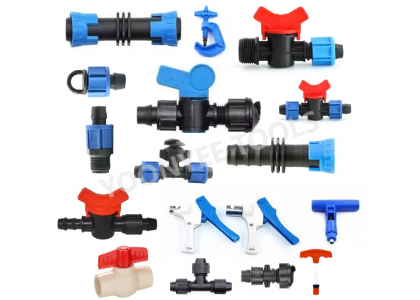
Drip irrigation valves are an essential component of an efficient watering system for gardens, farms, or landscapes. They control the water flow to the drip irrigation lines, ensuring that plants receive the right amount of water. Here's a general guide on how to use a drip irrigation valve:
1. **Installation:**
- **Positioning:** Place the valve in an area where it can be easily accessed and where it will effectively control the water flow to your irrigation lines.
- **Connection:** Connect the valve to the water source using appropriate piping. This could be a garden faucet, a pump, or directly into a main water line, depending on your system.
- **Valve Box:** If the valve is to be buried, place it in a valve box for easy access. Make sure the box is level and the valve is properly oriented.
- **Wiring (if automatic):** If you have an automatic valve, you will need to connect it to a controller or timer using low-voltage wiring.

2. **Programming (if automatic):**
- Set the controller to turn the valve on and off according to your watering schedule. Adjust the run times and frequency based on your plants' needs and local weather conditions.
3. **Operation:**
- **Manual Valve:** If the valve is manual, you will need to turn it on and off manually. This is done by adjusting the handle to the open or closed position.
- **Automatic Valve:** If the valve is automatic, it will operate according to the schedule set on the controller. Make sure the controller is set to the correct day and time.
4. **Testing:**
- After installation and programming, test the valve to ensure it is working correctly.
- Turn on the water manually or activate the controller to see if the valve opens and closes as expected.
- Check for leaks or any irregularities in the water flow.
5. **Maintenance:**
- Regularly inspect the valve for any signs of damage or wear.
- Clean the valve and its components as needed to prevent clogs or malfunctions.
- If the valve fails to operate, it may need to be repaired or replaced.
6. **Winterizing (if applicable):**
- In areas with freezing temperatures, you will need to winterize the valve to prevent damage.
- This typically involves blowing out the lines with compressed air to remove water that could freeze and expand, cracking the valve or pipes.
Remember that the specific instructions for using a drip irrigation valve may vary depending on the make and model of the valve. Always refer to the manufacturer's instructions for the most accurate guidance. Additionally, local water regulations and codes should be followed during installation and use.